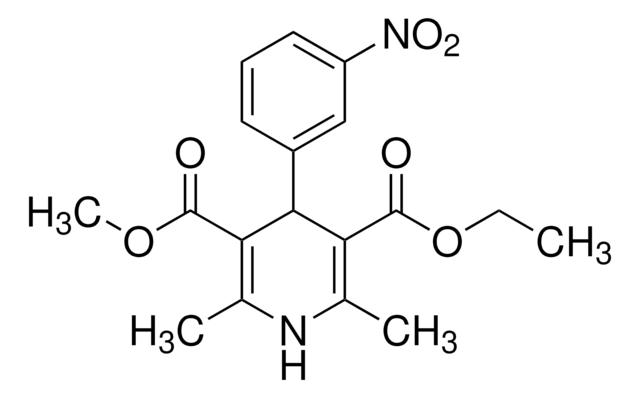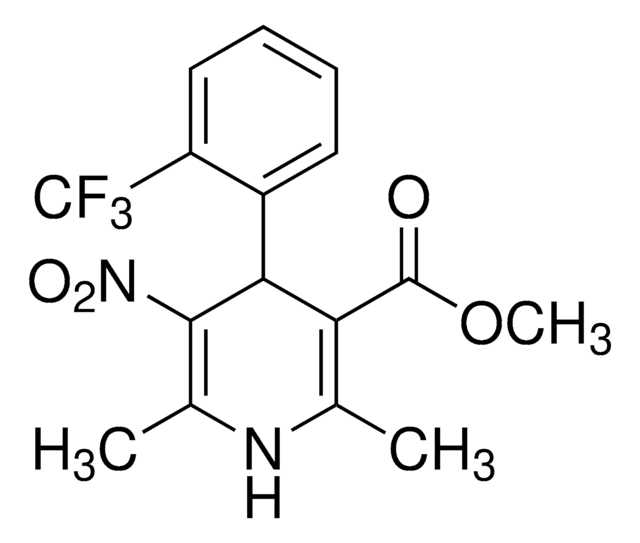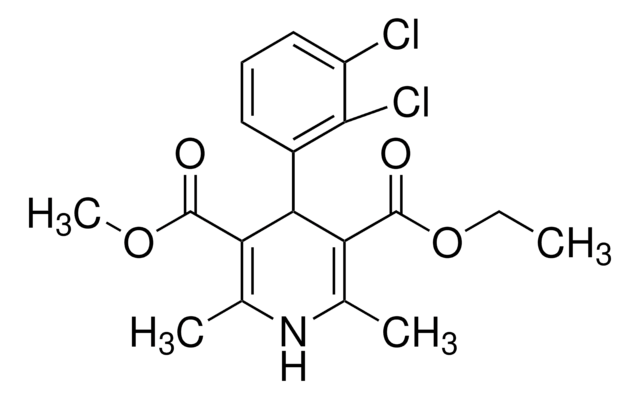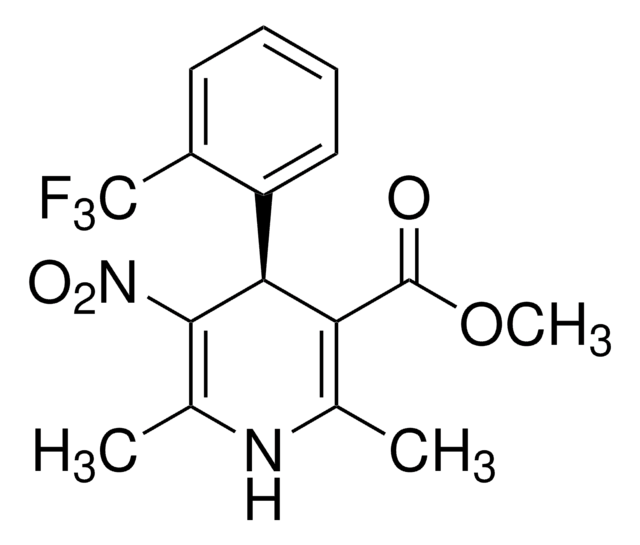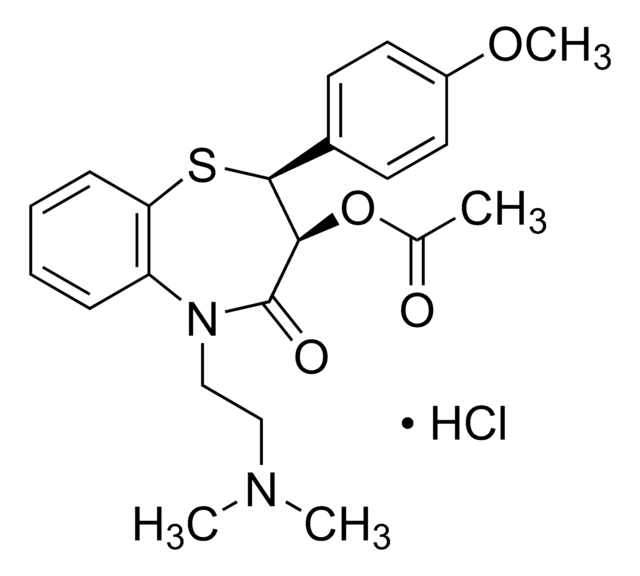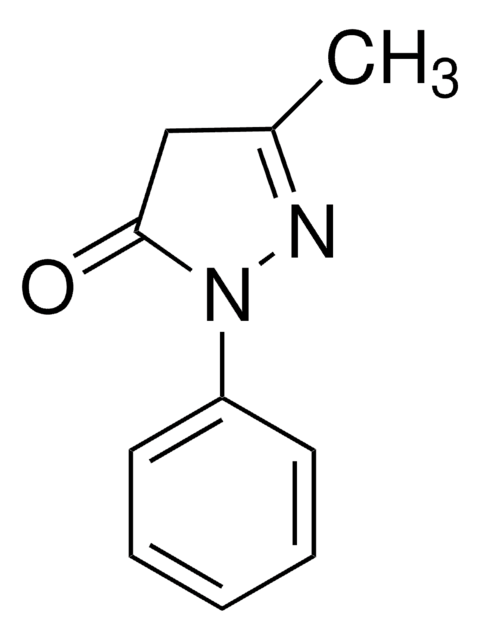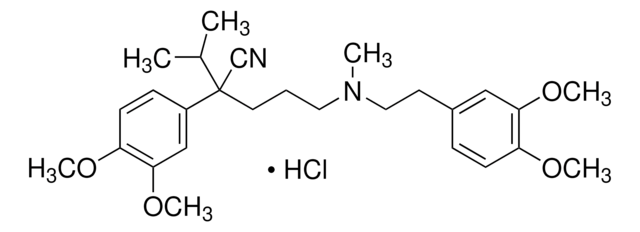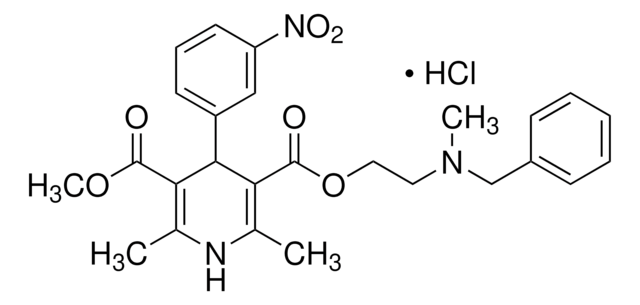N149
Nimodipine
Sinónimos:
1,4-Dihydro-2,6-dimethyl-4-(3-nitrophenyl)-3,5-pyridinedicarboxylic acid 2-methoxyethyl 1-methylethyl ester, Isopropyl 2-methoxyethyl 1,4-dihydro-2,6-dimethyl-4-(m-nitrophenyl)-3,5-pyridinedicarboxylate
About This Item
Productos recomendados
Ensayo
≥98% (HPLC)
Nivel de calidad
Formulario
powder
color
off-white to yellow
solubilidad
methanol: 62.5 mg/mL
45% (w/v) aq 2-hydroxypropyl-β-cyclodextrin: insoluble
H2O: insoluble
emisor
Bayer
cadena SMILES
COCCOC(=O)C1=C(C)NC(C)=C(C1c2cccc(c2)[N+]([O-])=O)C(=O)OC(C)C
InChI
1S/C21H26N2O7/c1-12(2)30-21(25)18-14(4)22-13(3)17(20(24)29-10-9-28-5)19(18)15-7-6-8-16(11-15)23(26)27/h6-8,11-12,19,22H,9-10H2,1-5H3
Clave InChI
UIAGMCDKSXEBJQ-UHFFFAOYSA-N
Información sobre el gen
human ... ADORA3(140) , CACNA1C(775) , CACNA1D(776) , CACNA1F(778) , CACNA1S(779) , CACNG1(786) , NR3C2(4306)
rat ... Adora1(29290) , Adora2a(25369)
¿Está buscando productos similares? Visita Guía de comparación de productos
Aplicación
- as a L-type calcium channel (LTCC) inhibitor, to evaluate its neuroprotective activity in the vibrosections
- as a standard, in the enantioseparation of chiral drugs by high performance liquid chromatography (HPLC)
- in the pharmacological studies for the measurement of spine voltage escape
Acciones bioquímicas o fisiológicas
Características y beneficios
Precaución
Palabra de señalización
Warning
Frases de peligro
Consejos de prudencia
Clasificaciones de peligro
Acute Tox. 4 Oral
Código de clase de almacenamiento
11 - Combustible Solids
Clase de riesgo para el agua (WGK)
WGK 1
Punto de inflamabilidad (°F)
Not applicable
Punto de inflamabilidad (°C)
Not applicable
Equipo de protección personal
dust mask type N95 (US), Eyeshields, Gloves
Elija entre una de las versiones más recientes:
¿Ya tiene este producto?
Encuentre la documentación para los productos que ha comprado recientemente en la Biblioteca de documentos.
Los clientes también vieron
Nuestro equipo de científicos tiene experiencia en todas las áreas de investigación: Ciencias de la vida, Ciencia de los materiales, Síntesis química, Cromatografía, Analítica y muchas otras.
Póngase en contacto con el Servicio técnico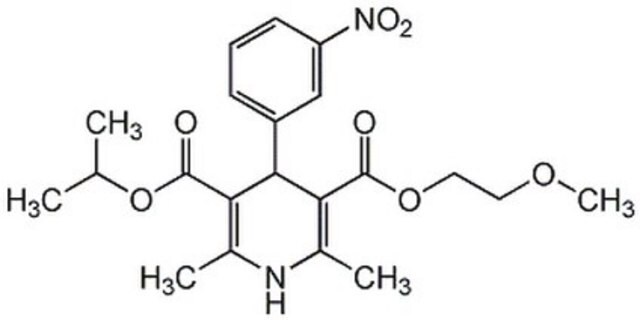
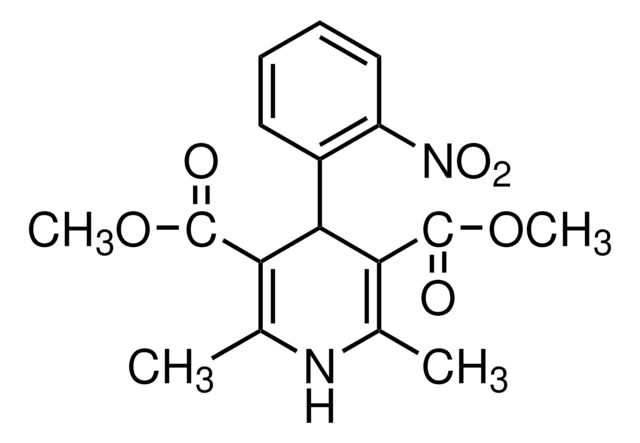
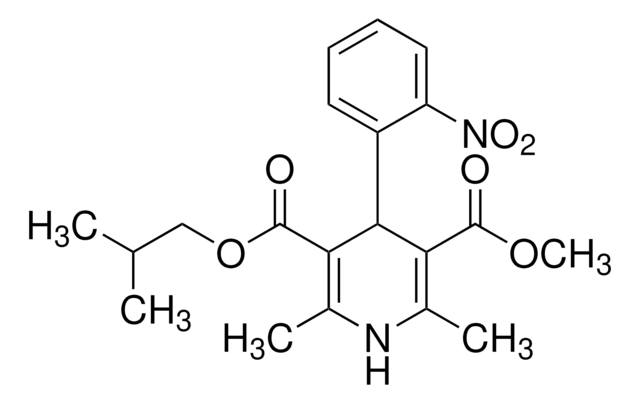
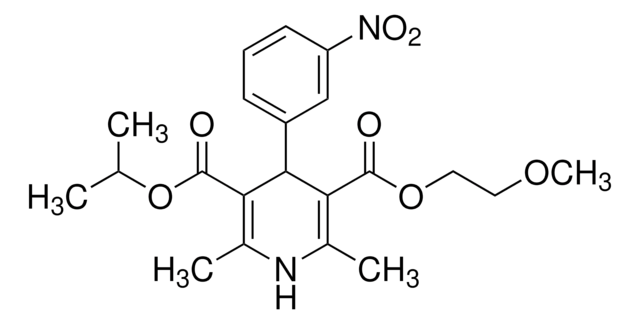
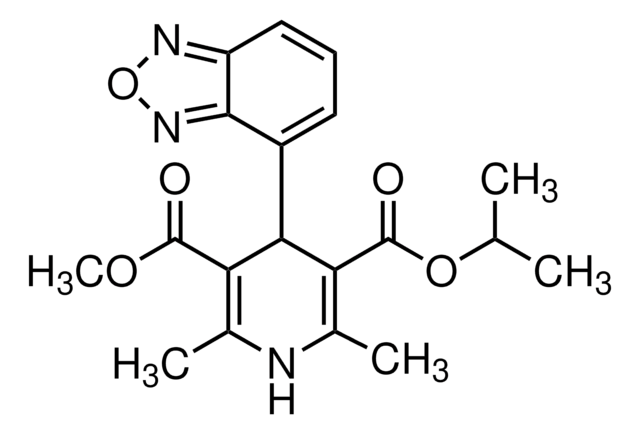

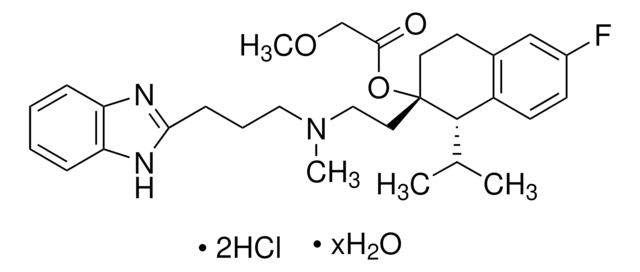
![N(1)-dodecyl-N(3)-[3-(dodecylamino)propyl]-1,3-propanediamine AldrichCPR](/deepweb/assets/sigmaaldrich/product/structures/184/200/68c42cb5-3811-47e2-9f1f-8987743b0fce/640/68c42cb5-3811-47e2-9f1f-8987743b0fce.png)

